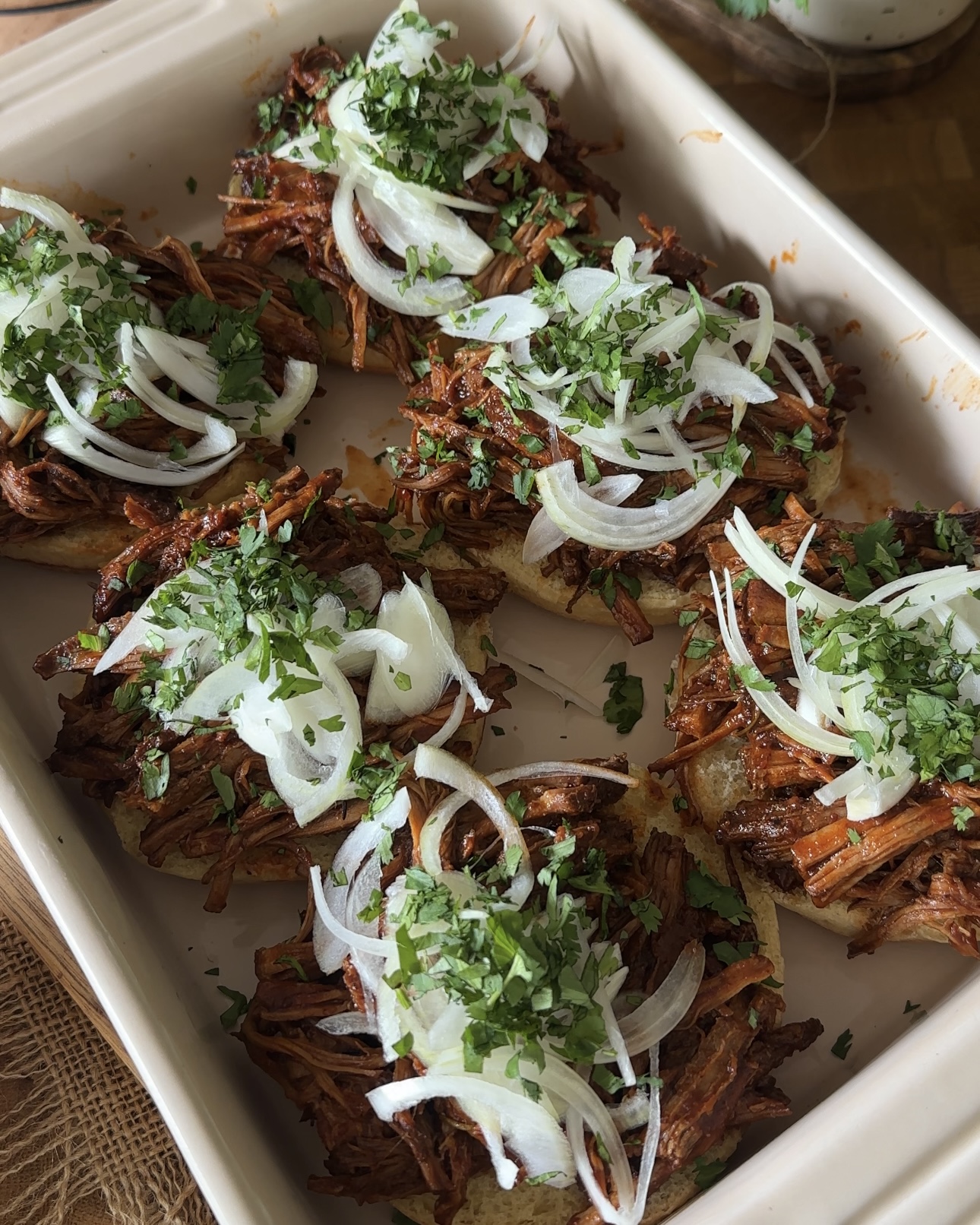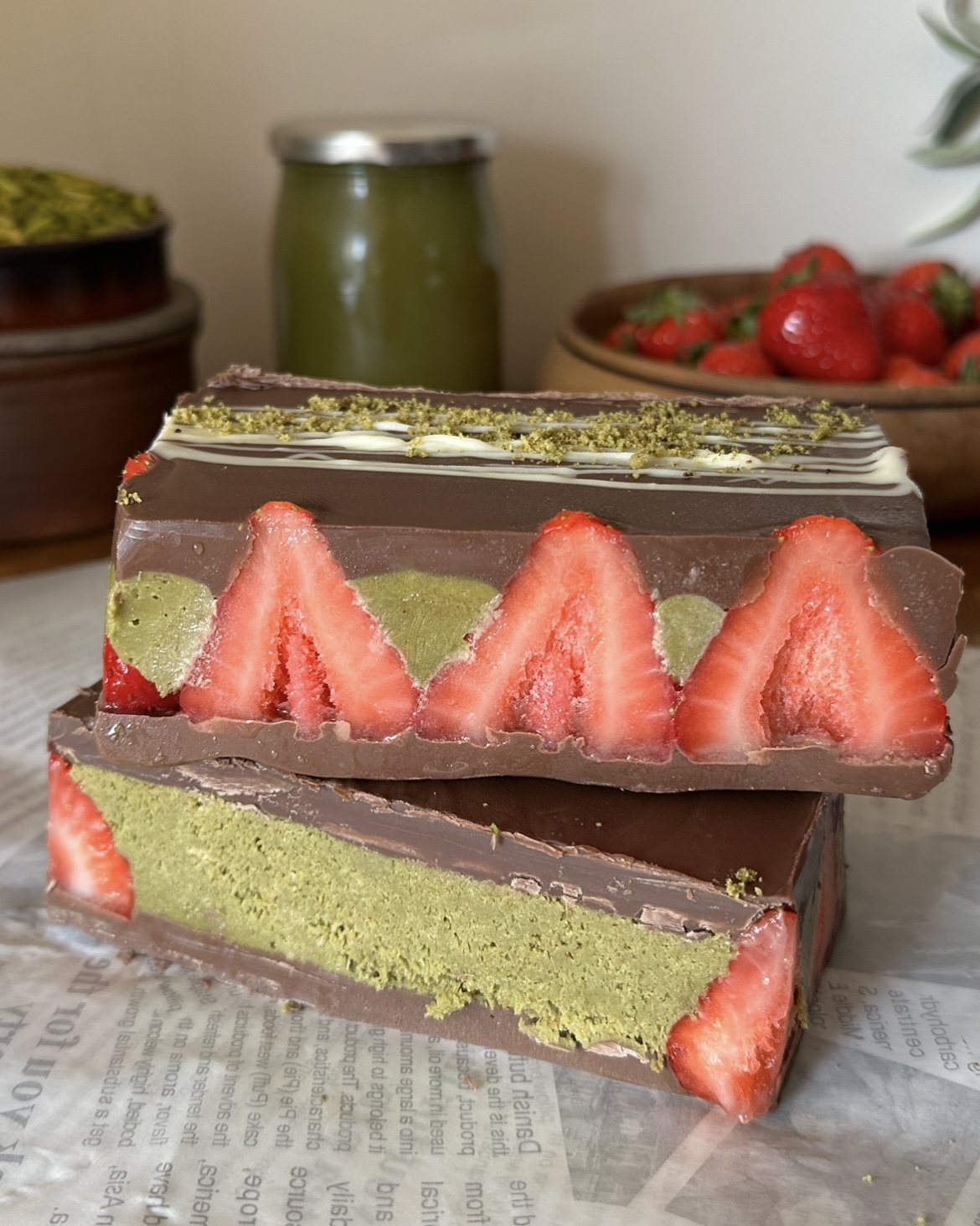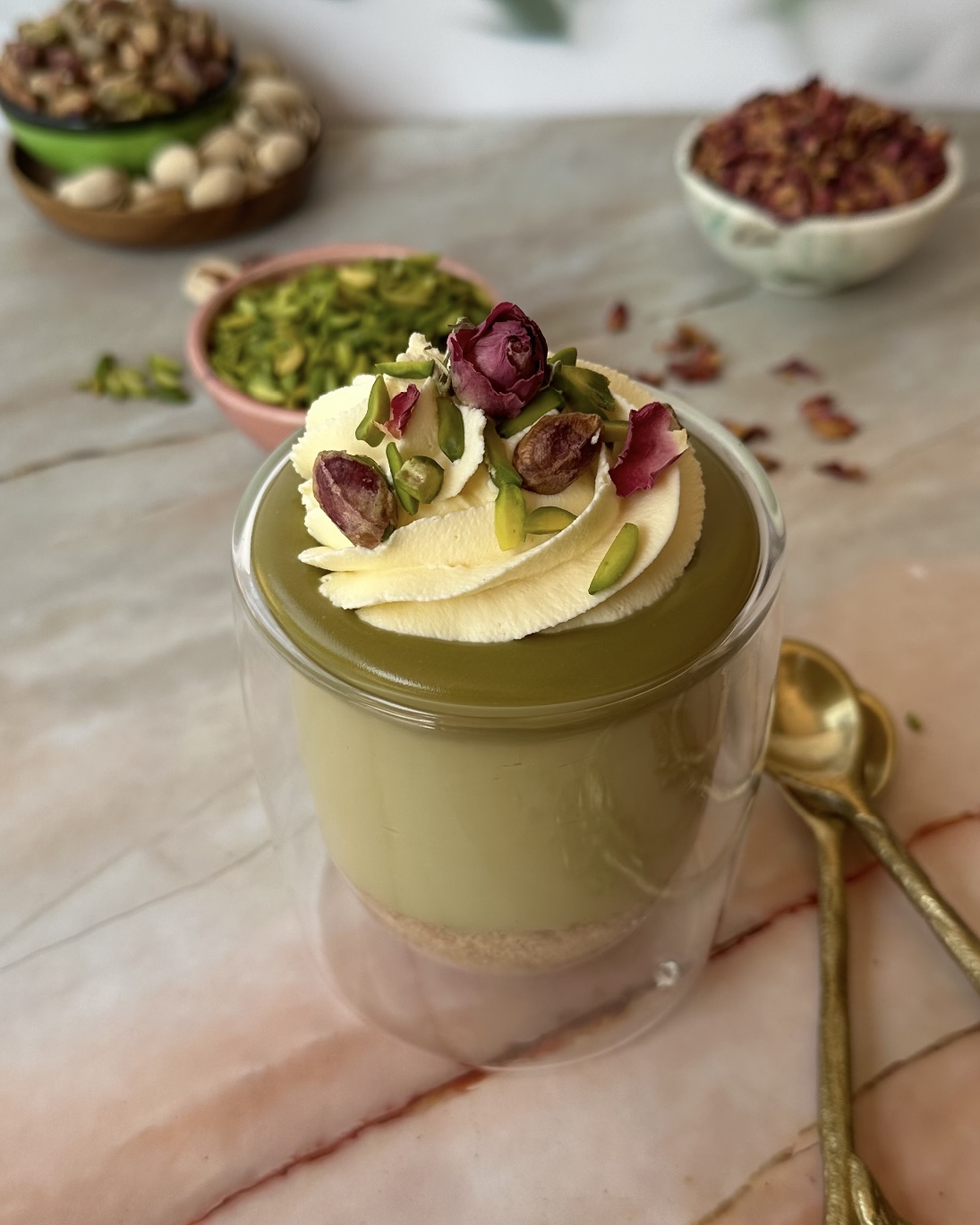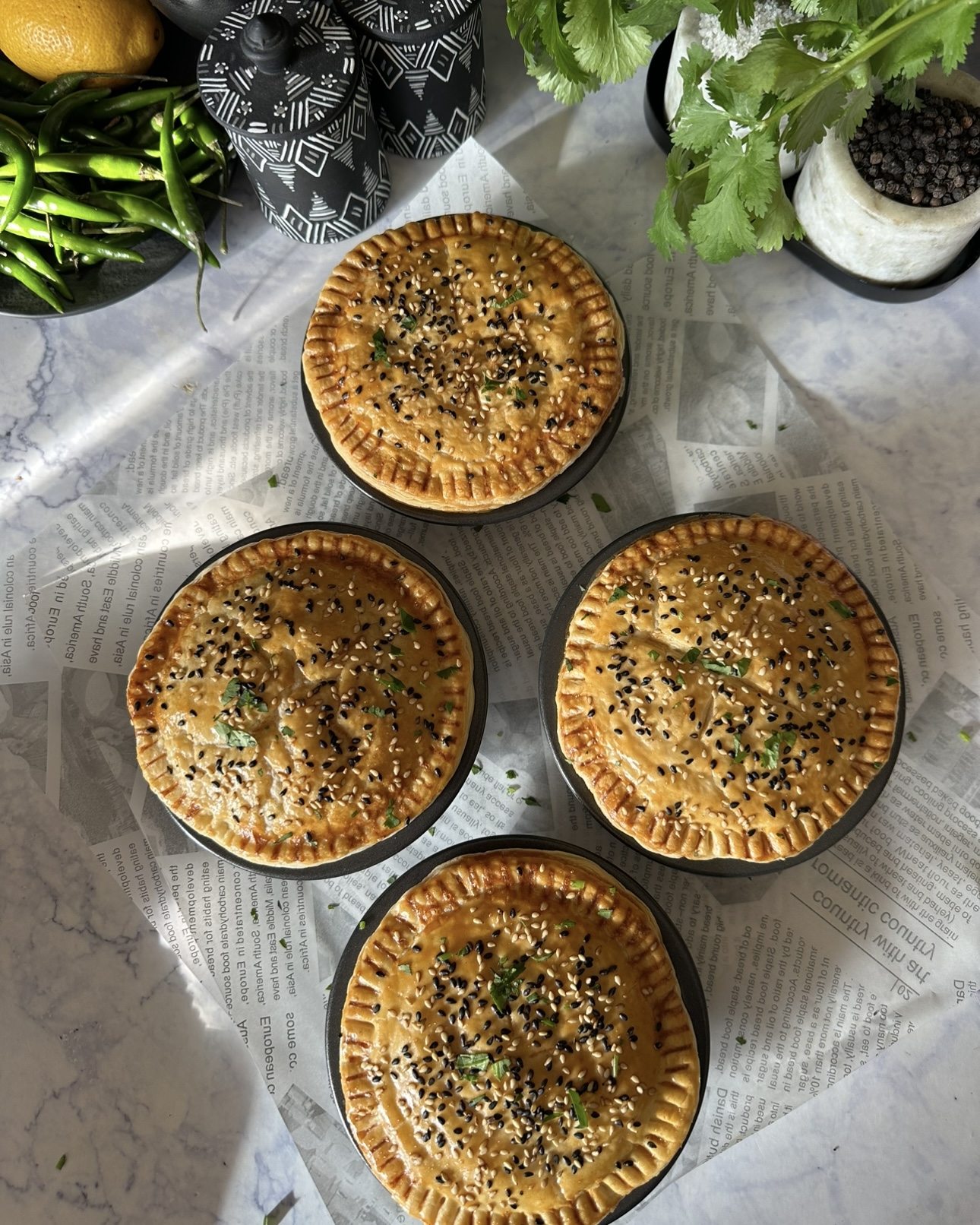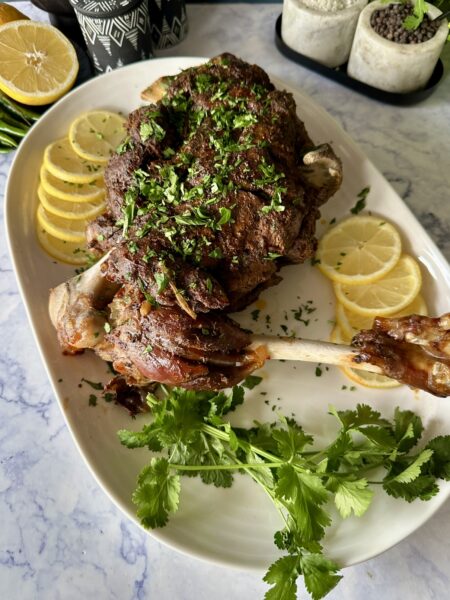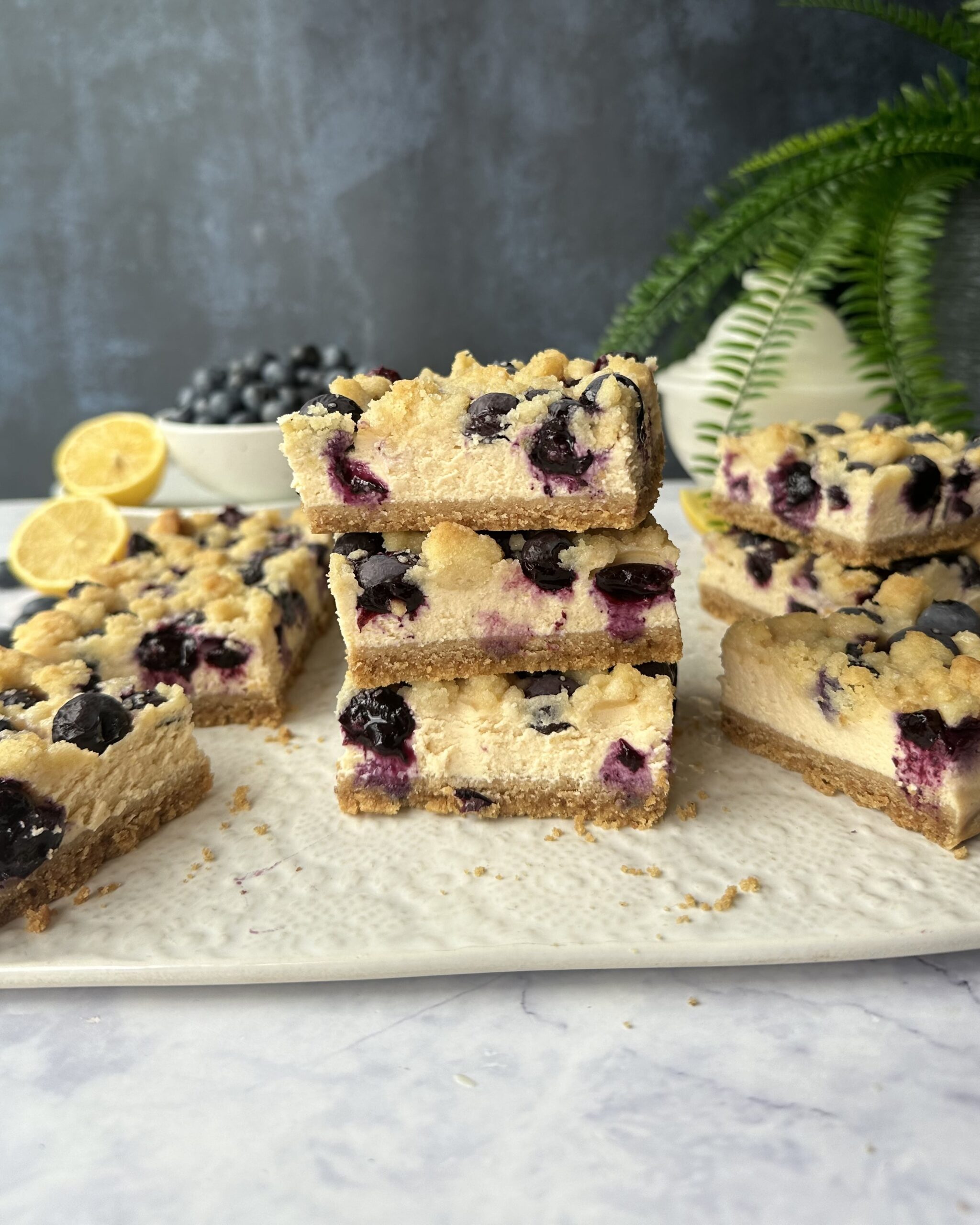SHAHI TUKRAY (SHAHI TUKDA)
Shahi Tukray is a decadent South Asian dessert that beautifully marries the richness of fried bread with the lusciousness of rabri—evaporated milk infused with cardamom and nuts. Each piece of bread is gently dipped in sweet syrup, then layered with chilled rabri and garnished with an array of nuts and delicate edible silver leaves. Shahi Tukray, also known as Shahi Tukda, traces its roots to the Mughal era in India, reflecting the opulence and grandeur of royal kitchens. The term "Shahi" translates to "royal," highlighting its historical significance as a dessert fit for kings and emperors.Shahi Tukray is a dessert that embodies luxury and tradition, making it a cherished recipe in south asian households. Its rich flavors and elegant presentation make it a standout dish that delights guests at any gathering. Whether you’re reliving cultural traditions or simply indulging in a sweet treat, Shahi Tukray is sure to leave a lasting impression. Try making it at home, and experience the royal taste for yourself!
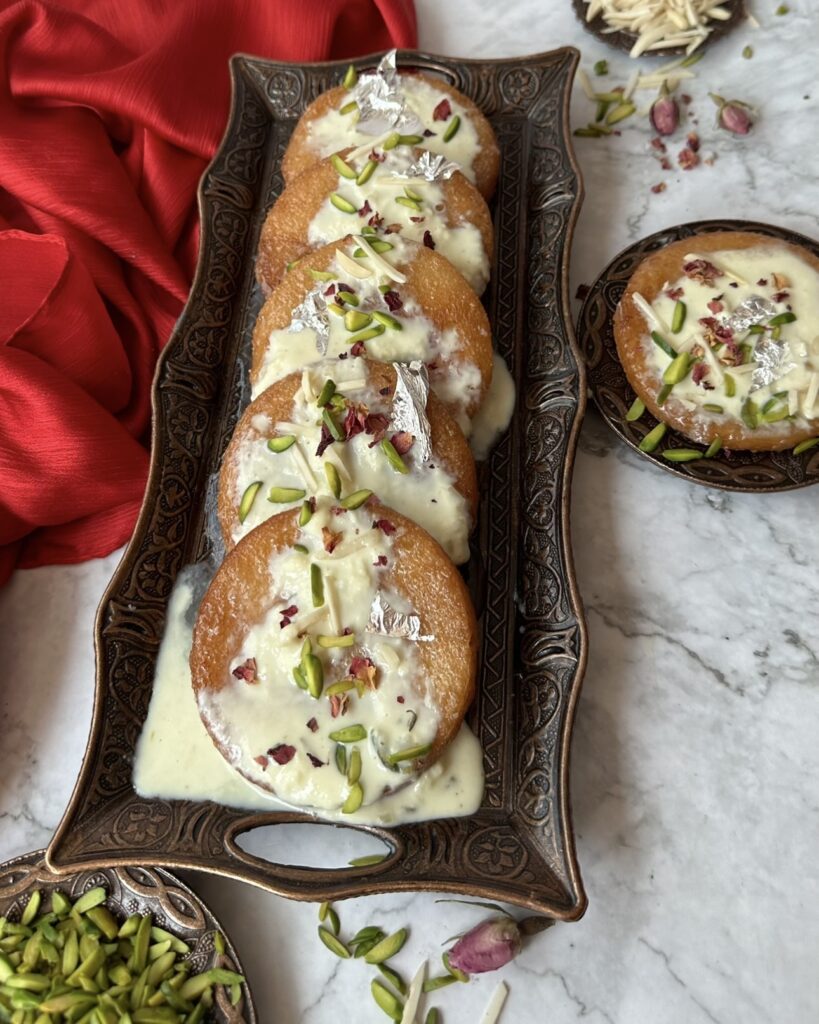
Ingredients
For Rabri:
For Sugar Syrup:
For Fried Bread:
For Garnishing:
Instructions
Prepare the Rabri:
-
-
- In a heavy-bottomed pan, pour in the milk and bring it to a boil over medium heat. Stir occasionally to prevent the milk from sticking to the bottom of the pan.
-
- Once boiling, lower the heat and continue to simmer the milk. Keep stirring occasionally and scrape off the cream layer that forms on the sides. Continue this process until the milk reduces significantly.
-
- Once the milk has thickened, add sugar and cardamom powder. Stir well and let it simmer for a few more minutes to allow the flavors to meld.
-
- Add the chopped nuts into the rabri and mix well. Turn off the heat.
-
- Allow the rabri to cool to room temperature, then transfer it to the refrigerator to chill until ready to serve.
Prepare the Sugar Syrup:
-
-
- In a separate pan, combine sugar and water. Heat the mixture and stir until the sugar has completely dissolved.
-
- Allow the syrup to cook on low heat until it reaches a one-string consistency. Test this by taking a drop of the syrup between your thumb and forefinger; it should form a single thread when pulled apart.
-
- Once done, remove from heat and let the syrup cool to room temperature.
Fry the Bread:
-
-
- Cut the bread slices into your desired shapes, such as circles or triangles. For best results, consider air drying the bread for a day or at least for a few hours to prevent it from absorbing too much oil.
-
- In a pan, heat ghee or oil over medium heat.
-
- Fry the bread pieces until they are crisp and golden brown on both sides. Once done, drain the excess oil and let the fried bread cool.
Assemble the Shahi Tukray:
-
-
- Dip the fried bread pieces quickly into the sugar syrup to soak them, but avoid letting them sit too long to prevent them from getting too soggy.
-
- Place the soaked bread on a serving platter and top it generously with the chilled rabri.
-
- Finish with a sprinkle of chopped almonds, pistachios, edible silver leaves, and dried rose petals for an elegant touch.
-
- Allow the assembled Shahi Tukray to chill in the refrigerator for some time before serving.
Note
When making rabri, be patient. The milk needs to be simmered for a long time to achieve the right thickness. Stir continuously to prevent it from burning or sticking to the bottom of the pan.
Remember to scrape the cream layer that forms on the sides of the pan back into the milk. This enhances the richness and texture of the rabri.
While white bread is traditionally used, ensure it is a few days old or slightly stale. Fresh bread tends to absorb too much oil while frying. You can also air-dry the bread slices for a few hours before using them.
For an authentic taste, frying in desi ghee is recommended, as it imparts a rich flavor. Ensure the oil is hot enough before adding the bread to achieve a crispy texture.
Use medium heat when frying the bread to ensure that it cooks evenly and becomes crispy without burning. If the oil is too hot, the bread will brown too quickly on the outside while remaining soggy inside.
Make sure to reach the one-string consistency for the sugar syrup. This ensures that the syrup coats the bread properly without making it overly soggy.
While dipping the fried bread in the sugar syrup, do it quickly to avoid oversaturation. The bread should be moist but not falling apart.
Allow the rabri to cool completely before assembling. Chilling it enhances the flavor and texture, making it more refreshing when served.
Use a generous amount of nuts and edible silver leaves to enhance the visual appeal. Dried rose petals not only add beauty but also a subtle floral aroma.
Shahi Tukray tastes best when served chilled. Allow it to sit in the refrigerator for a while after assembling to let the flavors meld.
For an elegant presentation, layer the rabri in a glass dish with the soaked bread, or serve it on a decorative plate. This adds a touch of sophistication to the dessert. In the video I just poured rabri on top. but later soak it well in rabri to absorb all flavours.
Experiment with different flavors by adding saffron strands to the rabri or infusing the sugar syrup with rose water or kewra essence for a fragrant twist.
Traditionally, white bread is used due to its soft texture, which absorbs the syrup and rabri beautifully. However, variations can include different types of bread or even leftover bread to reduce waste.
For a vegan adaptation, substitute regular milk with almond, coconut, or soy milk to make a creamy rabri, and use plant-based oils for frying.



